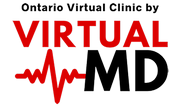Rosacea is a skin condition that often appears in middle-aged and older adults. It is more common in women with fair skin, and it is characterized by redness and pimples in the face, especially in the central part of the face such as cheeks, chin, and forehead.
In most cases, rosacea only affects the face, but there is a subtype that affects the eyes even though it is not as common.
What causes Rosacea?
The cause is unknown. There is no precise mechanism of why it appears. Still, studies have shown that it could be related to an immune system dysfunction in response to bacteria or UV light that generates inflammation and, therefore, the rosacea.
Rosacea has a strong genetic component. If someone in a family already has the diagnosis, it is more likely that other people in the family will suffer from it too.
Something important to know is what triggers rosacea. It can generate the flushing or the skin to remain red for longer periods. These triggers are not causes for the condition, but they for sure could complicate it. Alcohol, sunlight, exercise, a change in the weather, and topical (cream) steroids are some of the most common triggers that affect patients.
Symptoms
There are four different types of rosacea. Most of them have in common the redness of the face or facial flushing and pimples or pustules that may be confused for acne but without greasy skin. On the contrary, the skin in a lot of patients with rosacea turns very dry and can even have some scaling.
Some types of rosacea can include a thickening of the skin, especially the nose that can even become deformed called rhinophyma, but this is an extreme case that differs from most the rosacea cases; also, it only happens in men.
Other facial symptoms are not usual, but eye involvement, for example, is a type of rosacea called ocular rosacea, and it manifests as very red eyes and eyelids, also dry eye and sometimes itchiness.
Other significant symptoms that are not caused by this condition per se are depression and anxiety. Rosacea involves facial changes that can make a person insecure and lose their self-esteem.
Treatment and management
There is no cure for rosacea, but since it is now an unsettling condition, it can be treated, and patients live a happier life by having it under control. Treatment includes antibiotic creams and sometimes even oral medicines that decrease the symptoms and manifestations of rosacea.
What is most important is to remind patients to avoid the triggers mentioned before to prevent the rosacea from appearing. Also, if there are other triggers that they discover are complicating their condition, then avoid those too.
Checking with a doctor is always important to receive the correct diagnosis and recommendations. At VirtualMD, you can get information from a professional.
If you have comments or questions regarding rosacea, don’t hesitate to call us free at 1-800-594-0537, and a doctor will be there to help you. We can fax a prescription to your pharmacy of choice if required.
